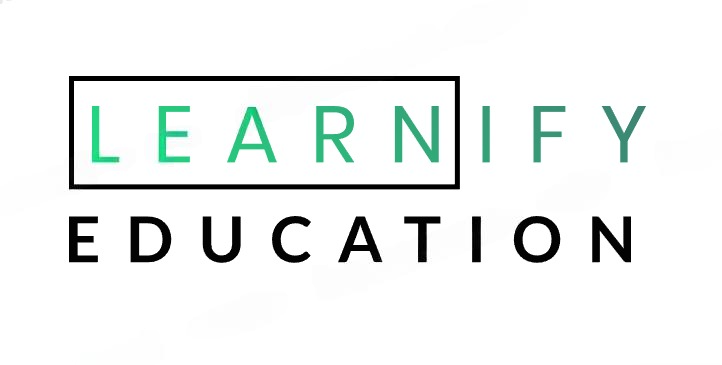











Compare India's leading
universities on a single platform
within two minutes.
- Online MBA for job professionals 100 + Universities
- 30X comparison factors
- Free expert consultation
- Quick Loan facility
- Post Admission Support
- Learnify Exclusive Community
- Job + Internship Portal
How to Successfully Transition from College to the Workforce
- No-Cost EMI From ₹5100/-
- Subsidy Available upto ₹20,000/-

Transitioning from college to the workforce can be both an exciting and overwhelming experience. The jump from academic life to professional life comes with its own set of challenges and opportunities. In this post, we’ll walk you through the essential steps to make this transition as smooth and successful as possible.
1. Understand the Key Differences Between College and Work Life
In college, you have a structured schedule with assignments and exams that guide your daily routine. However, the workforce demands greater autonomy and responsibility. The first step in transitioning from college to the workforce is to recognize these differences. The workplace requires you to be proactive, meet deadlines independently, and focus on long-term career goals.
2. Start Networking Early
One of the most important aspects of transitioning from college to the workforce is building a professional network. Networking is not just about finding job opportunities but also about learning from others and staying informed about trends in your field.
How to Network Effectively
- Attend career fairs, workshops, and webinars.
- Engage with professionals on LinkedIn.
- Establish relationships with professors, alumni, and industry leaders.
Networking can give you a solid foundation when it’s time to start your career.
3. Sharpen Your Resume and Online Presence
A strong resume and an updated LinkedIn profile are essential tools for any job seeker. Highlight your accomplishments, relevant skills, and internship experiences that align with the job you’re applying for.
Resume Tips for Fresh Graduates:
- Tailor your resume to each job application.
- Showcase both hard and soft skills.
- Focus on relevant experiences like internships, volunteer work, and projects.
Additionally, make sure your LinkedIn profile is complete and professional. Employers look for candidates who demonstrate both technical proficiency and soft skills such as teamwork, communication, and problem-solving.
4. Prepare for the Job Search Process
Searching for a job can feel daunting, but with proper preparation, you can approach it strategically. Set clear career goals, research companies, and make a list of roles you’re interested in.
Steps to Prepare for Your Job Search:
- Set specific career goals.
- Use job search engines like Indeed and LinkedIn.
- Tailor your cover letters to each job application.
- Practice your interview skills to boost your confidence.
Tailoring your applications shows employers that you are genuinely interested in the role.
5. Develop Soft Skills for the Workplace
While technical skills are important, soft skills play a crucial role in your success in the workplace. Focus on improving skills such as communication, leadership, time management, and adaptability.
Essential Soft Skills to Focus On:
- Communication: Learn how to effectively convey your ideas.
- Time Management: Stay organized and meet deadlines.
- Adaptability: Be open to changes and new challenges.
These skills will not only help you build strong relationships with colleagues but also make you a more effective employee.
6. Be Ready for Professional Challenges
The first year after college can bring about a steep learning curve. You may face challenges such as tight deadlines, long hours, and demanding supervisors. It’s important to stay patient and resilient during this time. Accept feedback with grace and be open to learning new things.
Overcoming Early Career Challenges:
- Stay positive and view challenges as opportunities to learn.
- Build resilience by staying focused on your goals.
- Seek advice and mentorship from experienced professionals.
The ability to handle challenges effectively will set you apart and help you grow as a professional.
7. Create a Work-Life Balance
In college, you had the freedom to manage your own schedule. In the workplace, this balance can be harder to maintain, especially when you’re trying to prove yourself. However, it’s essential to prioritize your well-being. Set boundaries to ensure you maintain a healthy work-life balance.
Tips for Work-Life Balance:
- Make time for personal activities and hobbies.
- Set clear work hours and stick to them.
- Take breaks and avoid burnout.
Taking time for yourself outside of work helps prevent burnout and promotes productivity.
8. Ask for Guidance and Mentorship
The transition from college to the workforce can be smoother with the right guidance. Seek out mentors who can offer advice and provide support as you navigate this new phase of your life.
How to Find a Mentor:
- Reach out to alumni from your college.
- Look for professionals in your field who are open to mentoring.
- Ask for feedback and career advice.
A mentor can help you make informed decisions, overcome challenges, and stay on the right path in your career.
9. Embrace Continuous Learning
In the workplace, learning doesn’t stop once you land a job. The best professionals never stop growing. Whether it’s improving your technical knowledge, learning a new software, or improving your interpersonal skills, always be open to gaining new knowledge.
Ways to Keep Learning:
- Take online courses or certifications.
- Attend workshops and webinars.
- Read books and articles relevant to your career.
This proactive learning approach will not only enhance your job performance but also make you stand out as an employee who is committed to professional development.
10. Stay Positive and Persistent
The first few months after college can be full of ups and downs. It’s normal to feel uncertain or face rejections. However, stay positive and persistent. Every setback is a chance to learn. With time, you’ll gain more confidence in your abilities and discover what truly excites you in your professional career.
How to Stay Positive:
- Focus on small wins and achievements.
- Keep a growth mindset and learn from setbacks.
- Seek support from friends, family, and colleagues.
With time and persistence, you’ll adapt and thrive in your new professional environment.
Conclusion
Transitioning from college to the workforce is a significant step in your career journey. By understanding the key differences between college and work life, building a strong network, preparing for the job search, and developing your soft skills, you can set yourself up for success. Stay persistent, keep learning, and be open to the challenges and growth opportunities that will come your way. With the right mindset, you’ll make a successful transition and thrive in your new professional environment.


